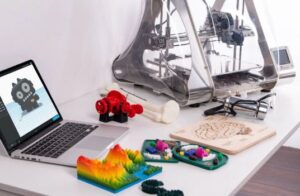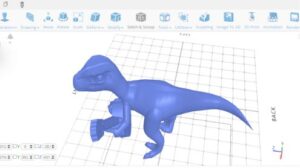3D Print Shop: How to Open One

Opening a 3D print shop can be a rewarding venture in today’s tech-driven world. This guide explores the essential steps to start your own 3D printing business, from understanding market demand to setting up your workspace and acquiring the right equipment. Learn how to navigate the complexities of the industry, including sourcing materials, creating a business plan, and offering unique services to attract customers. Thus, this article provides practical advice and insights to help you launch a successful 3D print shop and turn your passion for printing into a thriving business.
Insights and Preparations
- Consult Existing Shop owners
- Speak with experienced 3D printing shop owners to gain practical advice based on their experiences.
- Learning from their mistakes and successes can save time and increase the chances of your venture’s success.
- Gain Hands-on Experience
- Undertake work experience at a successful 3D printing shop to understand daily operations and specific challenges.
- This experience will help determine if the job aligns with your lifestyle and offers valuable contacts and insights into customer expectations.
- Enroll in a Training Course
- Participate in industry-specific training to familiarize yourself with 3D printing operations before starting your own shop.
- Ensure you understand the required expertise, the typical week in the business, potential turnover, and growth prospects.
Assembling Your Team
- Determine the Need for Co-founders
- Consider if you need co-founders to bring additional skills, capital, or both.
- An odd number of partners is often advisable to break ties in decision-making.
- Evaluate Compatibility
- Ensure potential partners share your vision and ambition to avoid future conflicts.
- Discuss exit strategies in case a partner decides to leave.
- Plan for Potential Failure
- Prepare for potential failure and assess how it might affect your personal and financial situation.
- Evaluate the impact on relationships, especially if partners are close friends or family.
Conducting Market Research
- Set Objectives
- Assess demand for your 3D printing shop and ensure there is room for a new entrant in the market.
- Identify a concept and market positioning that will increase your chances of success.
- Analyze Industry Trends
- Understand the current state of the industry and the leading players.
- Assess both demand and supply to identify market opportunities for your shop.
- Assess Demand
- Identify target customers, their expectations, buying habits, and budget.
- Determine different customer segments and effective communication channels.
- Analyze Supply Side
- Research existing competitors, their location, size, turnover, pricing, and market positioning.
- Identify what customers like about competitors to find ways to differentiate your shop.
- Understand Regulations
- Investigate any required degrees, licenses, or permits to operate a 3D printing shop.
- Ensure there are no regulatory obstacles before diving deeper into planning.
- Conclude Market Research
- Determine if there is an untapped opportunity or if the market is saturated.
- If stagnant, consider alternative business ideas or models.
Choosing the Right Concept and Positioning
- Define Your Market Position
- Determine how your shop will compete and differentiate from existing competitors.
- Decide whether to start a new shop or buy an existing one.
- Validate Your Concept
- Validate your business concept and market positioning to ensure it meets customer needs and stands out from competitors.
- Establish market presence
- Develop strategies to establish a presence in the market and capture market share from competitors.
Understanding these aspects will help you determine if opening a 3D printing shop is the right business idea for you, considering your skills, ambitions, and financial situation.
Evaluating Your 3D Printing Shop Strategy
Market Positioning and Competition
- Avoiding Direct Competition: Focus on customer segments that are currently underserved by existing players. Identify niche markets or specific needs that are not adequately addressed by competitors.
- Offering Unique Value: Differentiate your shop by providing unique products or services that complement the existing market offerings. This could involve innovative features, enhanced services, or specialized products.
- Sustainable Competitive Advantage: Build a long-term competitive edge through factors like exceptional customer service, superior technology, or unique product offerings. Consider developing strong relationships with suppliers and customers to reinforce your market position.
- Resource Assessment: Evaluate whether you have sufficient resources to compete with established businesses. If not, explore alternative strategies, such as partnerships or leveraging existing market players’ strengths.
- Competitor Reaction: Anticipate how established competitors might respond to your entry. Prepare strategies to address potential competitive actions, such as pricing wars or increased marketing efforts.
Starting vs. Buying an Existing 3D Printing Shop
- Buying an Existing Shop: Acquiring a running business provides immediate access to a loyal customer base and an established team. This can reduce market disruption and minimize the risk of failure compared to starting from scratch.
- Capital requirements: Purchasing an existing business generally requires more capital upfront than starting a new one. Evaluate your financial capacity to handle this expense.
- Market Positioning: With a takeover, you have the flexibility to rebrand or reposition the business if desired, aligning it better with your vision while retaining the benefits of an established operation.
Validating Your Concept and Market Positioning
- Customer Feedback: Engage with potential customers to present your products or services and gather feedback. This helps ensure your market positioning meets their expectations and needs.
- Concept Validation: Test your business concept through pilot projects or market surveys to validate its viability and adjust your strategy based on the feedback received.
Choosing the Right Location
- Visibility and Foot Traffic: Opt for a location with good visibility and high foot traffic to attract potential customers and boost brand awareness.
- Accessibility: Ensure the location is accessible via road and public transport, with adequate parking space. This is important for both customers and employees.
- Proximity to Target Customers: Select a site near your target market to increase customer convenience and retention.
- Competitor Presence: Being close to competitors can drive innovation and competitiveness. Analyze how their presence might impact your business.
Legal Structure for Your 3D Printing Shop
- Importance of Legal Form: The legal structure affects taxation, risk exposure, decision-making, and financing. Choose a form that aligns with your business needs and goals.
- Types of Legal Structures:
- Individual Businesses: These are simple setups with fewer formalities, but personal assets are at risk. They have limited funding options due to a lack of share capital.
- Companies: Offer legal identity and limited liability, protecting personal assets. More complex operations with stringent formalities and higher funding potential.
Selecting the Legal Structure
- Choosing the Right Form: Assess your sales forecasts, need for employees, and number of co-founders. Compare with competitors’ structures and seek professional advice to finalize your choice.
- Flexibility: Changing your legal structure later is possible but may involve additional costs. It’s prudent to select the appropriate structure initially to avoid future complications.
Financial Planning and Startup Costs
- Initial Investments:
- 3D Printers: Significant capital expenditure, ranging from hundreds to thousands of dollars based on type and capabilities.
- 3D Scanner: Essential for creating digital models; costs vary widely.
- Computer and Software: Necessary for design and model preparation; consider multiple units if needed.
- Raw Materials: Includes plastic filaments, resins, and powders; expenses depend on the variety offered.
- Finishing Equipment: Includes tools like sanders and polishers for high-quality finishes.
- Budgeting: Tailor your budget to your specific needs and consult up-to-date estimates. Prepare a financial forecast to determine initial investment requirements and profitability potential.
Staffing needs for a 3D printing Shop
Essential Roles:
- 3D Printing Technician: Operates and maintains printers, ensuring optimal performance and quality.
- Customer Service Representative: Handles order inquiries, manages accounts, and resolves customer issues.
- Marketing Specialist: Promotes the business through advertising, social media, and other marketing channels.
Adjustments: The exact staffing needs will depend on the size and scope of your 3D printing shop.
Operating Costs for a 3D Printing Shop
Key Expenses:
- Staff Salaries: Covers wages, benefits, and training.
- Rent: Cost of leasing the shop space.
- Utilities: Includes electricity, water, and internet.
- Materials: Costs for filaments and resins used in printing.
- Maintenance and Repair: For printers and other equipment.
- Marketing: Expenses for promoting the shop.
- Accountancy Fees: For managing financial records and taxes.
- Insurance: Liability coverage to protect against potential lawsuits.
- Software Licenses: For 3D printing software.
- Banking Fees: Includes account maintenance and transaction fees.
- Packaging and Shipping: Costs for materials and services.
- Office Supplies: Paper, ink, and other essentials.
- Professional Development: Attending relevant workshops and conferences.
- Repairs and Maintenance: For the shop space itself.
- Subscriptions and Memberships: Industry publications and professional organizations.
Note: Tailor these costs based on the specifics of your shop.
Sales and Marketing Strategy
- Customer attraction: Utilize local business outreach, partnerships, and online advertising.
- Building Loyalty: Develop strategies to foster business and generate word-of-mouth referrals.
- Resource Planning: Determine the necessary human and financial resources for your marketing plan.
- Sales Forecasting: Consider seasonal trends and the competitive landscape in your projections.
SelfCAD: Best 3D Printing Software in 2024

SelfCAD is a versatile 3D design software available online and as a downloadable application, catering to both beginners and professionals. It enables users to create 3D models quickly and with ease, supported by video lessons, interactive tutorials, and comprehensive documentation. The software features an integrated slicing tool for preparing designs for 3D printing and offers 3D sculpting, sketching, and rendering tools, along with customizable pre-made 3D shapes. The video below shows how the drawing and sketching tools of SelfCAD work.
https://www.youtube.com/watch?v=B-R8Zzz1oOE&t=3s
With SelfCAD’s 2D drawing and sketching tools, users can easily convert sketches into 3D models. The platform also facilitates design sharing and project collaboration. It offers various pricing options, including a free plan with limited options. The $14.99 monthly subscription provides unlimited design creation, exporting, 3D printing, and rendering capabilities.
Turn Your Passion for 3D Printing into a Thriving Business
To successfully open a 3D print shop, focus on market research, quality equipment, skilled staff, and targeted marketing. Build strong relationships with clients and stay updated on industry trends to meet evolving demands. By prioritizing innovation and customer satisfaction, your shop can thrive in this competitive market.
